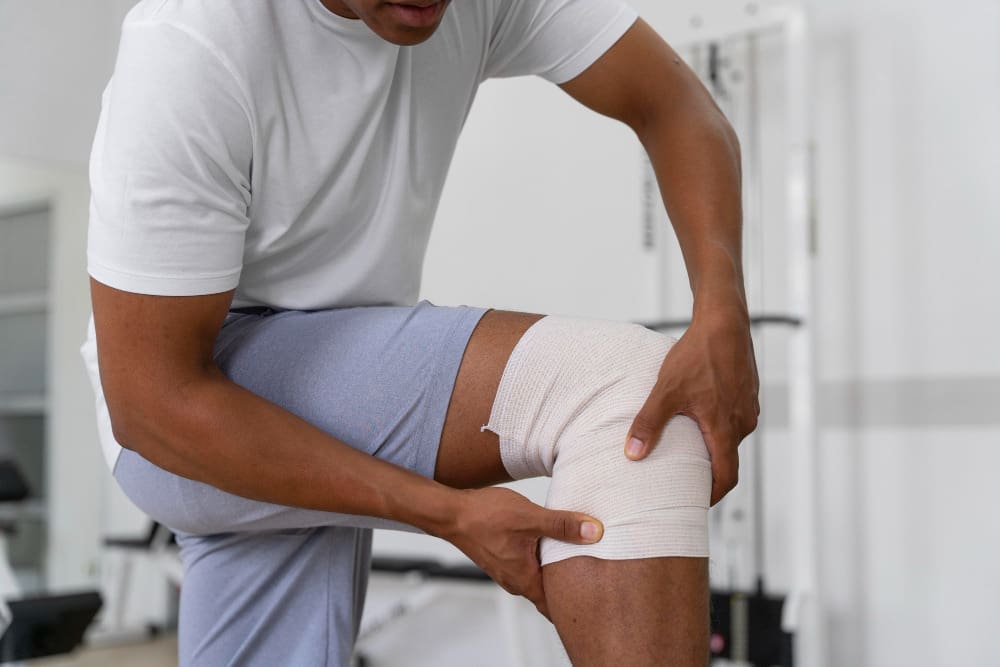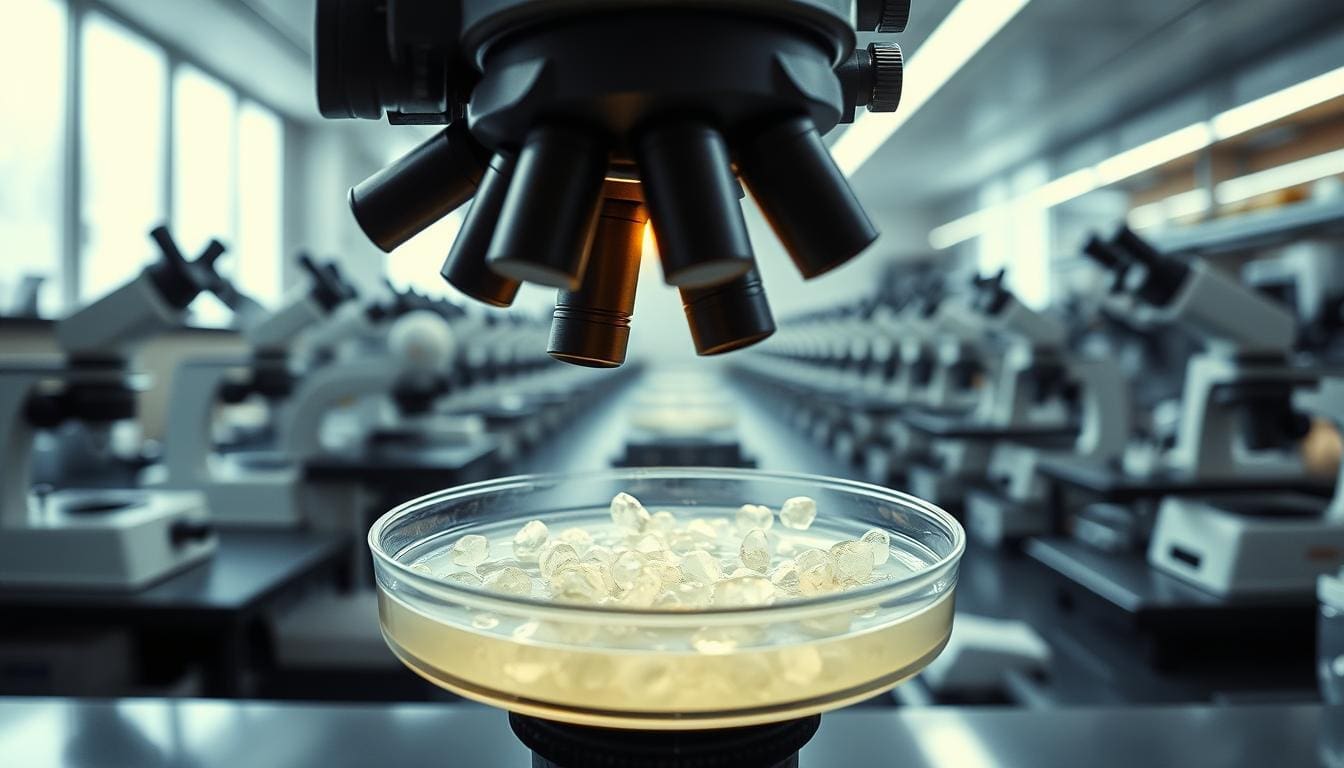Last Updated on November 26, 2025 by Bilal Hasdemir
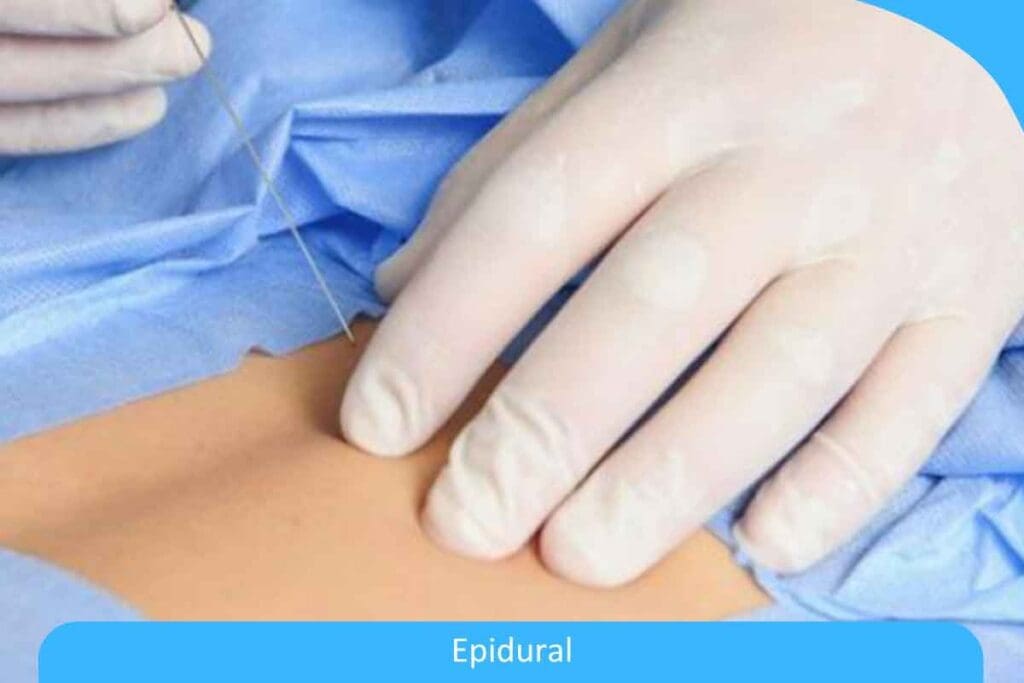
Many patients wonder how to get the most out of an epidural steroid injection after getting one. At Liv Hospital, we stress the need for good aftercare to help you heal well. One key thing is to stay away from heat. Heat can make the area around the injection more swollen, which might make the medicine less effective. Learn why no heat after epidural steroid injection is crucial for safe healing and avoiding irritation.
We focus on you, our patient, to help you get better. Knowing why you should avoid heat is important for your healing. We’ll talk about why it’s important to not use heat after an epidural steroid injection.
Key Takeaways
- Heat can increase inflammation after an epidural steroid injection.
- Avoiding heat helps maintain the effectiveness of the medication.
- Proper aftercare is key for the best recovery.
- Liv Hospital gives personalized help for your recovery.
- Knowing what to do after your injection helps your healing.
Understanding Epidural Steroid Injections and Their Purpose
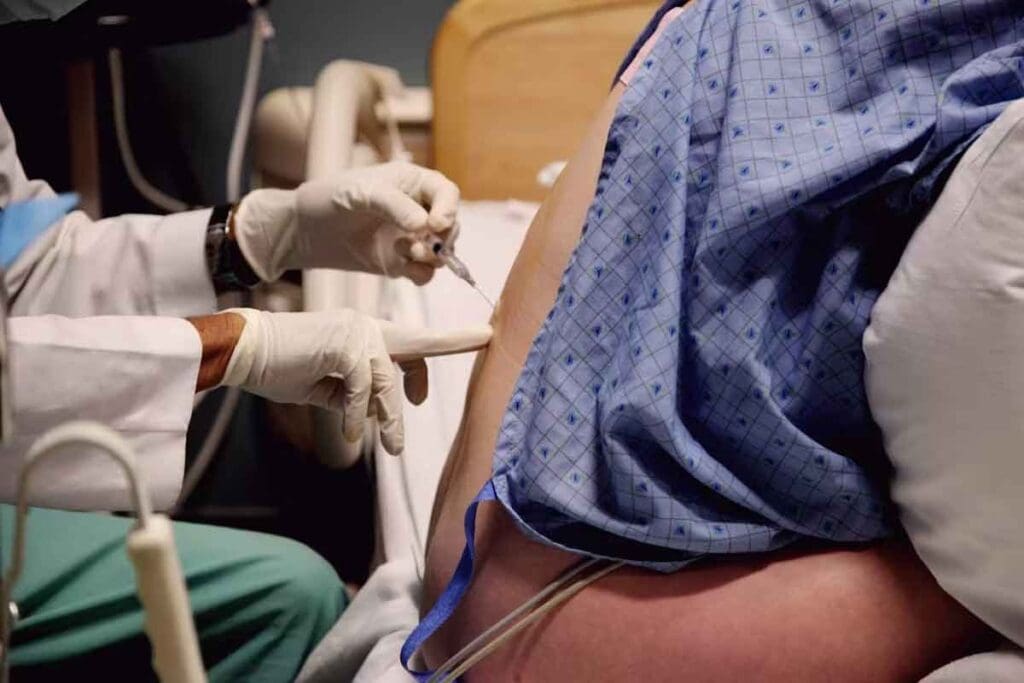
Epidural steroid injections are key for those with chronic pain. They are a major treatment for many spinal problems.
What Are Epidural Steroid Injections?
Epidural steroid injections help with pain from nerve inflammation. They mix a steroid with a local anesthetic. The steroid cuts down inflammation, and the anesthetic gives quick pain relief.
The steroid used is usually a corticosteroid, like triamcinolone or betamethasone. These are strong anti-inflammatory drugs. They reduce swelling around nerves, easing pain.
Common Conditions Treated with Epidural Injections
These injections are used for several spinal issues, including:
- Herniated discs
- Spinal stenosis
- Spondylolisthesis
- Degenerative disc disease
These conditions cause pain and discomfort due to nerve compression or inflammation.
The Injection Process and Medication Used
The injection process involves several steps:
- The patient is positioned on an X-ray table.
- The skin is cleaned and sterilized.
- A local anesthetic is administered to numb the area.
- Using fluoroscopic guidance, the needle is inserted into the epidural space.
- The steroid and anesthetic mixture is injected.
The medication includes corticosteroids and local anesthetics. Corticosteroids reduce inflammation, and local anesthetics give quick pain relief.
| Medication Type | Purpose | Examples |
| Corticosteroids | Reduce inflammation | Triamcinolone, Betamethasone |
| Local Anesthetics | Provide immediate pain relief | Lidocaine, Bupivacaine |
Why No Heat After Epidural Steroid Injection: The Scientific Explanation
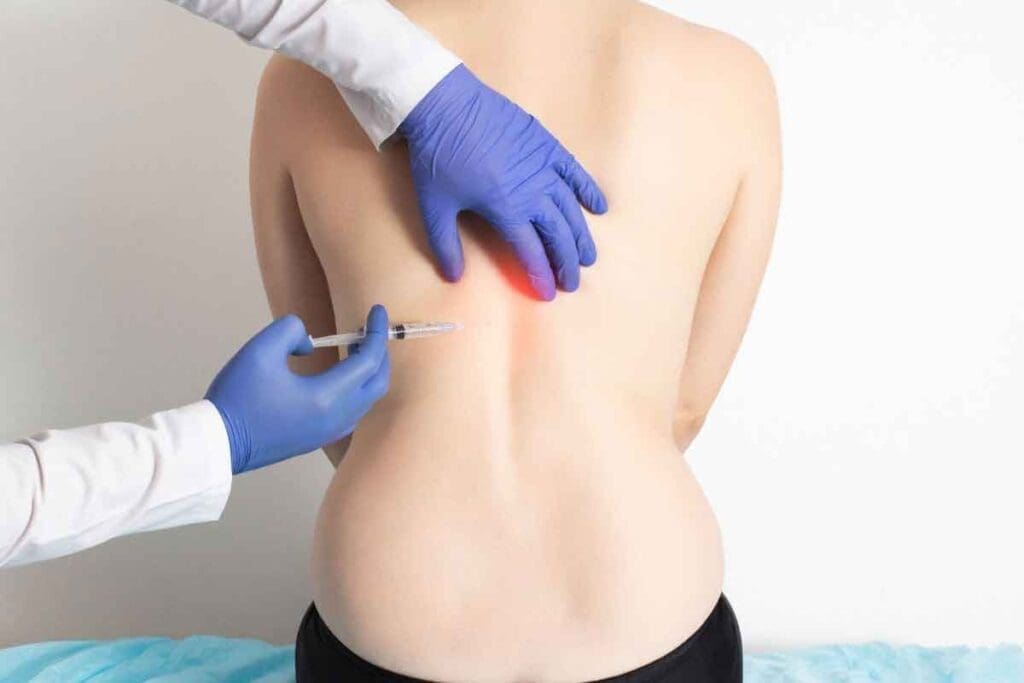
After getting an epidural steroid injection, it’s important to know why you shouldn’t use heat. These injections are used to treat spinal problems like herniated discs and spinal stenosis.
We’ll look at how heat affects the body after the injection. This includes blood flow, inflammation, and how the medication spreads.
How Heat Affects Blood Flow to the Injection Site
Using heat on the injection site can make blood vessels wider. This means more blood flows to the area. But, this might not be good for the injection.
More blood flow can wash away the steroid medication. This could make the injection less effective and might even cause more inflammation.
The Relationship Between Heat and Inflammation
Heat is often used to ease pain and stiffness. But, it can have the opposite effect after an epidural steroid injection.
Heat increases metabolic rate and enzymatic activity. This can make inflammation worse, which is what the steroid aims to reduce.
Impact on Medication Distribution and Effectiveness
The way the steroid medication spreads and works is key to the injection’s success. Heat can mess with this process.
| Effect | Without Heat | With Heat |
| Medication Distribution | Localized effect | Dispersed due to increased blood flow |
| Inflammation | Reduced | Potentially increased |
| Treatment Outcome | Optimal relief | Reduced efficacy |
By not using heat after an epidural steroid injection, you help keep the medication effective. This also helps control inflammation better.
The 5 Key Reasons to Avoid Heat Following Your Injection
Choosing to avoid heat after an epidural steroid injection is not random. There are important reasons behind it. Knowing why you should follow certain care steps after the procedure is key. It helps make the treatment work better and lowers the chance of problems.
Reason 1: Increased Inflammation Risk
Heat after the injection can make blood flow more, which might cause more inflammation. This goes against what the steroid is meant to do, which is to reduce inflammation and ease pain. Avoiding heat helps keep the anti-inflammatory effects of the medication strong.
Reason 2: Reduced Medication Efficacy
Heat can make blood vessels wider, which might spread the medication away from where it’s needed. This could make the epidural steroid injection less effective. By not using heat, we can keep the medication focused where it’s most needed.
Reason 3: Possible Tissue Damage
Too much heat can harm tissues or make irritation worse. After the injection, the tissues are already at risk. Heat could make things worse, making recovery harder.
Reason 4: Hiding Important Warning Signs
Heat after the injection might hide important signs like pain or discomfort. These signs are key to spotting problems early. By avoiding heat, patients can stay in tune with their body’s signals, getting help if needed.
Reason 5: Promoting Optimal Recovery Conditions
Avoiding heat after the injection helps recovery go smoothly. It lowers the risk of problems and makes sure the medication works right. The table below shows why avoiding heat is important for patient care.
| Reason | Implication |
| Increased Inflammation Risk | Counteracts the anti-inflammatory effect of the steroid |
| Reduced Medication Efficacy | Disperses medication away from the targeted area |
| Potential for Tissue Damage | Exacerbates existing tissue irritation or causes damage |
| Masking Important Warning Signs | Conceals pain or discomfort that could indicate complications |
| Promoting Optimal Recovery | Ensures the medication works effectively and minimizes complications |
In summary, avoiding heat after an epidural steroid injection is key to good care after the procedure. By following these guidelines, patients can improve their recovery and make their treatment more effective.
Post-Injection Care: Recommended Alternatives to Heat Therapy
After an epidural steroid injection, it’s smart to try other treatments instead of heat. Good care after the shot is key for a smooth recovery. This includes ways to handle pain, cut down on swelling, and help your body heal.
Cold Therapy Techniques
Cold therapy is great for easing pain and swelling after the shot. Use cold packs on the sore spot for 15-20 minutes, then take a break. Always wrap the pack in a towel to keep your skin safe.
Using cold therapy right can help with swelling and pain. But, be careful not to overdo it to avoid any bad effects.
Recommended Rest Periods and Activity Levels
Resting well is important after the shot. We suggest avoiding hard activities for at least a day. This lets the medicine work and lowers the chance of problems.
For the first few days, try not to bend, lift, or twist too much. These actions can make things worse or slow healing. Start doing normal things again slowly, with your doctor’s okay.
| Activity | Recommended Limitation |
| Bending | Avoid for 24-48 hours |
| Lifting | Limit to light objects for 48 hours |
| Twisting | Minimize for 24-48 hours |
Safe Movement Guidelines During Recovery
Moving safely during recovery is key to avoid problems and make the shot work better. Gentle stretching, as your doctor suggests, can help keep you flexible without hurting the area.
Also, keep your posture right and lift things correctly. Avoiding sudden movements helps avoid extra stress on your spine and muscles.
By sticking to these tips and using cold therapy, you can make your recovery better and get the most out of the treatment.
Why Not Use Heat After Cortisone Injection: Similar Guidelines
Heat is not recommended after getting an epidural or cortisone injection. This is because both types of injections aim to reduce pain and swelling. They work in different ways and are used for different conditions.
Comparing Epidural and Cortisone Injections
Epidural steroid injections are given near the spinal cord. They help with pain from herniated discs and sciatica. Cortisone injections, on the other hand, are used in joints, muscles, and tendons to fight inflammation.
Both injections aim to lessen pain and swelling. They share some post-injection care tips, like avoiding heat therapy right after.
Shared Concerns About Heat Application
Using heat after these injections can make the area more swollen. This goes against the goal of reducing swelling. Heat can also mess with how the medication works.
Heat might hide signs of problems, like pain. This could mean the injection is causing an issue.
Recovery Differences Between Injection Types
Recovering from both types of injections has some similarities. You should rest and avoid heat. But, the specifics depend on where the injection was given and the condition being treated.
| Recovery Aspect | Epidural Steroid Injections | Cortisone Injections |
| Activity Level | Generally advised to rest for 24 hours | May resume normal activities within a few hours, depending on the injection site |
| Medication Effects | Effects can last several weeks to months | Effects can vary, sometimes providing relief for several months |
| Follow-up Care | May require physical therapy as part of the recovery | May involve rehabilitation exercises, specially if injected into a joint or muscle |
Knowing the similarities and differences helps patients follow the right care instructions. This way, they can get the best results from their treatment.
Troubleshooting: No Pain Relief After Epidural Steroid Injection
Not getting pain relief after an epidural steroid injection is a complex issue. It can come from many factors. It’s key to know why this happens.
Common Reasons for Treatment Failure
Several things can cause no pain relief after an epidural steroid injection. These include:
- Inaccurate injection placement
- Severity of the underlying condition
- Individual variability in response to corticosteroids
- Presence of other underlying conditions
Knowing these reasons is important for figuring out what to do next.
The Role of Proper Injection Placement
How well the injection is placed is very important. If it’s not in the right spot, it might not work as well.
Proper technique and imaging guidance are key. They help make sure the injection is in the right place. Studies show that using imaging, like fluoroscopy, makes injections more accurate.
Individual Response Variability Factors
People can react differently to epidural steroid injections. This is because of many factors, including:
| Factor | Description | Impact on Treatment |
| Genetic predisposition | Influences how an individual responds to corticosteroids | May affect the efficacy of the treatment |
| Overall health | Presence of comorbidities or other health issues | Can impact the body’s response to the injection |
| Condition severity | The extent of the condition being treated | More severe conditions may require additional treatments |
Understanding these factors helps doctors create better treatment plans for each patient.
Why No Heat After Hip Surgery: Comparing Post-Procedure Guidelines
Hip surgery patients are often told not to use heat therapy right after. But why is this? We’ll look at the rules for recovering from hip surgery. We’ll see how swelling is a big concern and how recovery plans differ from other surgeries like epidural steroid injections.
Similarities in Post-Procedure Swelling Concerns
Hip surgery and epidural steroid injections both worry about swelling. Swelling can make you uncomfortable, slow down healing, and cause problems. So, doctors advise against using heat right away to keep swelling down.
Heat makes blood vessels bigger, which can bring more blood to the area. This might help in some cases, but not after surgery or injections. So, avoiding heat helps prevent too much swelling and helps you heal faster.
Differences in Recovery Protocols
Hip surgery and epidural steroid injections need careful care after, but they’re different. Hip surgery needs a longer recovery because it involves real cuts and more damage. Epidural steroid injections are less invasive, but they can cause irritation that needs careful handling.
The table below shows some key differences in how to recover:
| Recovery Aspect | Hip Surgery | Epidural Steroid Injections |
| Activity Level | Generally more restricted, with a focus on gradual mobilization | Less restrictive, with quicker return to normal activities |
| Swelling Management | Often involves elevation, compression, and cold therapy | May involve cold therapy and rest |
| Pain Management | Can involve a range of medications, including opioids | Typically managed with over-the-counter pain relievers or localized treatments |
When Heat May Eventually Be Appropriate
Heat therapy is usually avoided right after hip surgery or injections. But, it might be okay later on. After the healing starts, heat can help relax muscles and reduce tension.
It’s important to listen to your doctor’s advice. They can tell you when it’s safe to start using heat. Always start slowly and with their guidance to help your recovery.
Special Considerations: Weather Effects and Topical Products
Recovering from an epidural steroid injection can be tricky. Weather changes can impact our comfort levels. We’ll look at how cold weather affects epidural back pain and the safe use of products like Biofreeze.
Epidural Back Pain During Cold Weather: Causes and Management
Cold weather can make epidural back pain worse because muscles get stiffer. It’s important to manage this pain for a smooth recovery.
To manage pain in cold weather, keep your environment warm. Wear the right clothes and do gentle stretches.
Why You Can’t Use a Heating Pad with Biofreeze
Using a heating pad with Biofreeze is not safe. It can cause skin irritation or burns. Biofreeze cools the skin, and heat can undo its effects and cause bad reactions.
Safe Alternatives for Weather-Related Discomfort
For weather-related discomfort, try cold therapy or gentle exercises instead of heat with Biofreeze. Dress warmly and keep your environment comfortable.
| Management Strategy | Description | Benefits |
| Maintaining a Warm Environment | Keeping your living space warm | Reduces muscle stiffness |
| Gentle Stretching Exercises | Performing gentle stretches | Improves flexibility and reduces pain |
| Cold Therapy | Using cold packs or Biofreeze | Reduces inflammation and numbs pain |
Conclusion: Ensuring Optimal Recovery Through Proper Post-Injection Care
Proper care after an epidural steroid injection is key. It helps avoid complications and makes the treatment work better. We talked about why to avoid heat and how to handle pain without it.
By sticking to the care tips, patients can make their recovery better. This means using cold therapy, resting as advised, and moving safely. These steps help a lot.
Good care after the injection is vital for a smooth recovery. We stress the need to follow doctor’s advice for the best results. This way, patients get the most out of their treatment.
Good care is a big part of the treatment plan. We urge patients to take an active role in their recovery. Follow the care tips and ask your doctor for help when needed.
FAQ
Why should I avoid using heat after an epidural steroid injection?
Heat can make the area bleed more, which might make the pain worse. It can also reduce how well the medicine works.
What are epidural steroid injections used for?
These injections treat spinal problems like herniated discs and spinal stenosis. They put corticosteroids near the spinal cord to help.
Why can’t I use a heating pad with Biofreeze?
Biofreeze cools the skin to ease pain. Heat would undo its cooling effect, making it less effective.
What are the alternatives to heat therapy after an epidural steroid injection?
Cold therapy is better. Use ice packs or cold compresses to help with pain and swelling.
Why is there no pain relief after an epidural steroid injection?
Several reasons might explain why you don’t feel better. These include wrong injection placement, how your body reacts, and how bad your condition is.
Can cold weather affect epidural back pain?
Yes, cold weather can make back pain worse. Stay warm and use creams to help manage the discomfort.
Why should I avoid heat after hip surgery?
Heat can cause swelling and slow healing after hip surgery. It’s best to avoid it and follow your doctor’s advice.
What is the difference between epidural and cortisone injections?
Epidural injections go into the spinal space, while cortisone injections are for joints or soft tissues. They both use corticosteroids but for different reasons.
How long should I rest after an epidural steroid injection?
Rest for a while after the injection. Avoid hard activities and follow safe movement tips for a smooth recovery.
References
- Manchikanti, L., Helm, S., Benyamin, R. M., Fellows, B., Janata, J. W., Parr, A. T., Singh, V., & Smith, H. S. (2012). Effectiveness of epidural injections in managing chronic spinal pain. Pain Physician, 15(4), E349–E385. https://pubmed.ncbi.nlm.nih.gov/22828691/



